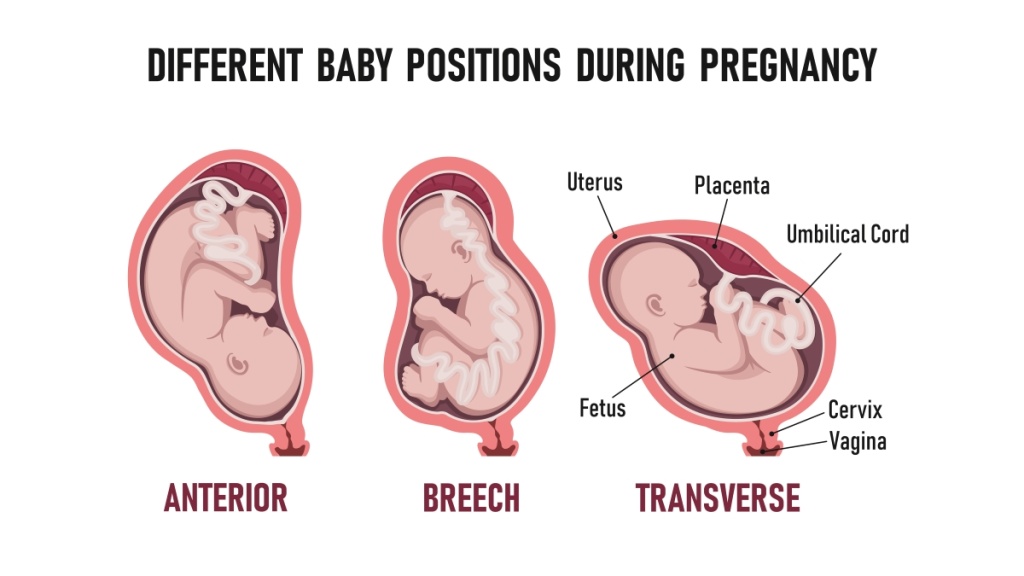
Throughout pregnancy, your developing baby moves into several positions. You might be wondering how your little one lies inside your uterus. Are they crisscross, upside down, sideways? As labor approaches, some positions are safer than others. Keep reading to learn all about fetal positions.
Positions in the Womb
- Anterior – The position ideal for birth, and the most common, is anterior. In the anterior position, your baby faces your back with the head pointing down to the ground. Your baby will most likely be moving in all different positions, but most settle into this position during the last month of pregnancy.
- Left occiput anterior – The baby is on the left side of the womb with their head facing down and facing your back.
- Right occiput anterior – The same position as listed above, except the baby is on the right side of the womb.
- Breech – The baby’s feet point down when the baby is in a breech position.
- Posterior – The baby’s head is down and their back is in line with yours.
- Transverse lie – The baby is lying horizontally on their back.
Anterior Position
The best position for delivery. The baby’s head is down in the pelvis, facing your back with their back facing your belly. This position allows for the baby to tuck their head in, with the top pressing down on the cervix. This encourages it to open for labor.
Breech Position
The breech position is when the baby is resting with their head up instead of down in the pelvis. If your baby is in the breech position at any time throughout pregnancy, there is no need to worry. It is safe for a baby to be in this position during pregnancy. Some risks are involved if the baby stays in breech position at the time of delivery. Only around 3-4% of babies are in breech position at the time of delivery.
Posterior Position
The posterior position is also known as the ‘back-to-back’ position. The baby’s head points down with their back resting against your back. This position makes it difficult for the head to tuck in and can lead to other challenges, such as:
- A challenging and slow labor
- Backache for the mom
- Harder to pass through the smallest part of the pelvis
Most babies are in this position due to mom spending long periods of time sitting or lying down, which is likely to happen if your doctor recommends bed rest. Since the back of a baby’s body is heavier than the front, they can sometimes be encouraged to roll into the ideal position by leaning in the wanted direction.
Transverse Lie Position
The baby is lying horizontally when in the transverse lie position. Most do not stay in this position in the weeks and days leading up to labor. If your baby is in this position right before birth, a cesarean delivery will most likely be necessary.
How to Tell Which Position the Baby is In
Your physician or certified nurse midwife can usually figure out your baby’s position by Leopold’s maneuver, which is feeling your belly with their hands. If they’re unsure, the position can be confirmed with an ultrasound.
It may also be possible for a person to tell which position their developing baby is in on their own. Pay attention to any movement you feel, like firm pushes from elbows, knees and feet. Following these movements, you might get a sense of which way your baby is oriented.
The baby might be in the anterior position if your abdomen feels firm, which means you’re feeling your baby’s back. Another way to tell if your baby is anterior is if you feel strong kicks under your ribs.
On the other hand, if your abdomen feels softer and your belly button is pushed in rather than poking out, your baby might be in the posterior position. Oftentimes in the posterior position, you’ll feel kicks in the middle of your belly.
Don’t Worry
Remember, your baby moves into many positions throughout your pregnancy journey. If your baby is in a transverse lie or breech position just before labor, the correct steps will be taken to ensure you and your baby’s safety during birth.


